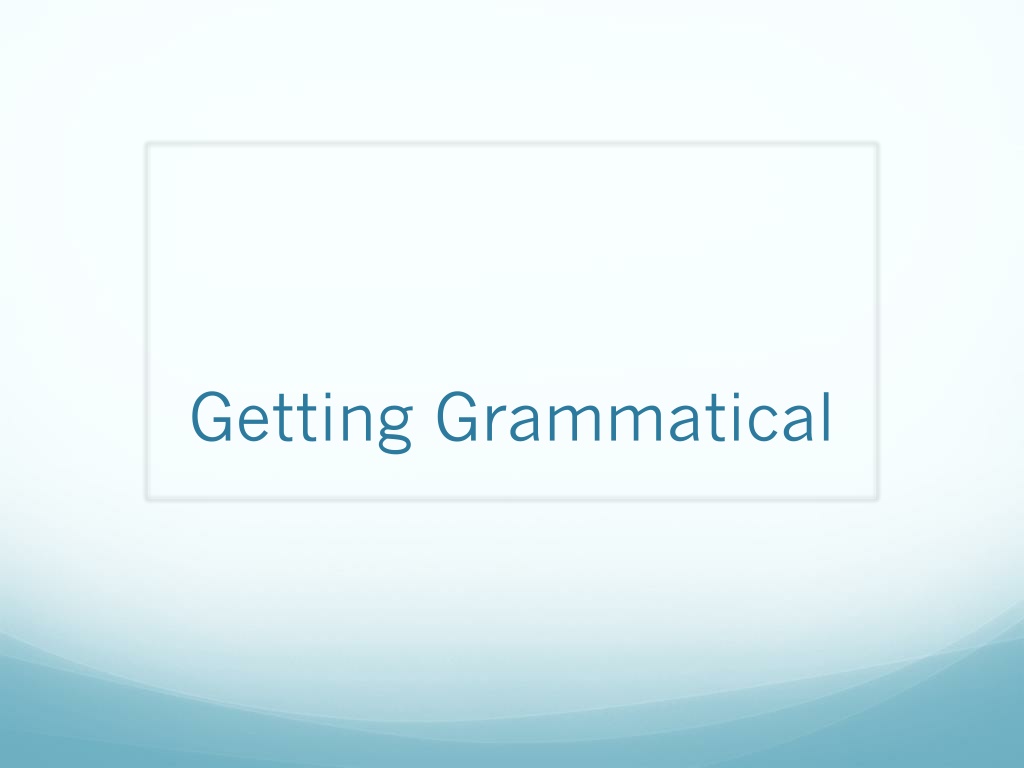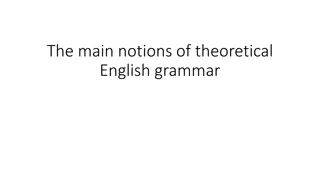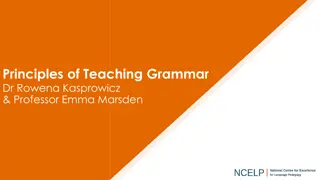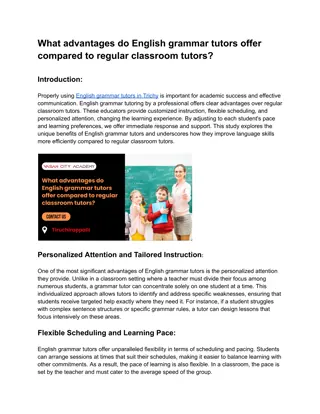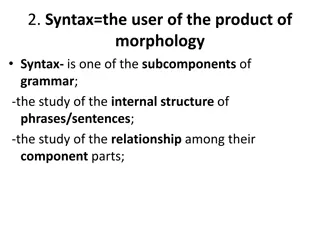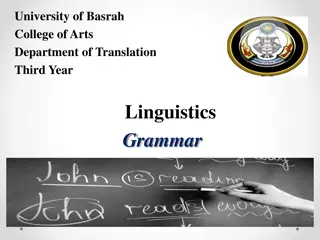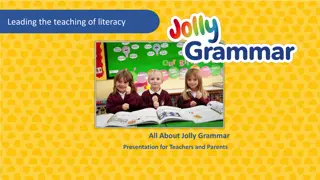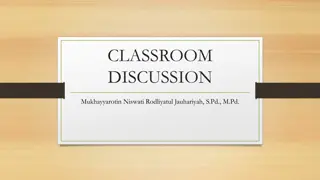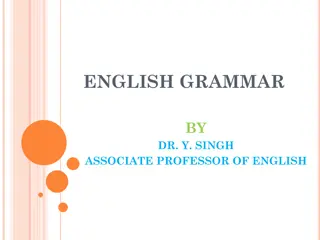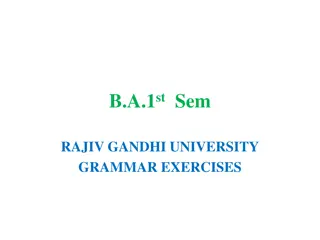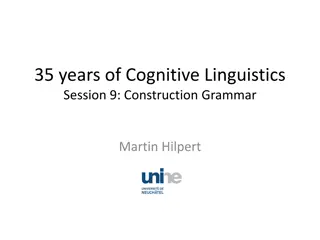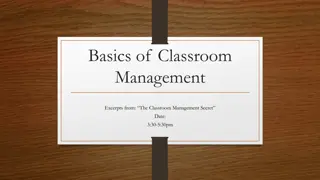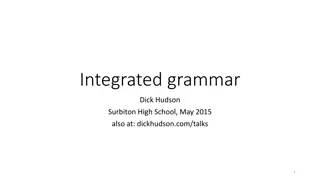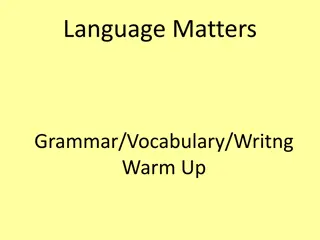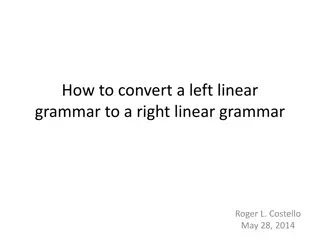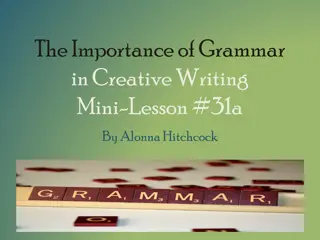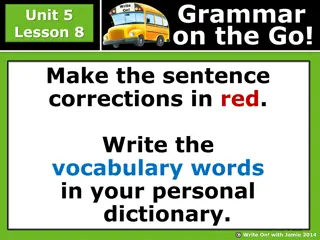Improving Grammar Skills in the Classroom
Explore techniques for addressing common grammar issues among students, such as the use of colons in writing and providing specific answers in reading assignments. Discover learning targets focusing on compound sentences and independent clauses, supported by refresher reminders. Enhance proficiency in writing by understanding the nuances of compound sentences with explanatory statements. Engage students with practical examples and activities to demonstrate command of standard English conventions.
Download Presentation

Please find below an Image/Link to download the presentation.
The content on the website is provided AS IS for your information and personal use only. It may not be sold, licensed, or shared on other websites without obtaining consent from the author.If you encounter any issues during the download, it is possible that the publisher has removed the file from their server.
You are allowed to download the files provided on this website for personal or commercial use, subject to the condition that they are used lawfully. All files are the property of their respective owners.
The content on the website is provided AS IS for your information and personal use only. It may not be sold, licensed, or shared on other websites without obtaining consent from the author.
E N D
Presentation Transcript
The Classroom Grade Level: 8 Gender: Boys (45%) & Girls (55%) SES: Eligible for Free Lunch: 9% Eligible for Reduced Lunch: 3% Location: Madrona School Edmonds, WA Races: American Indian: 1%, Asian: 10%, Hispanic: 9%, Black: 2%, White: 66%, Two or more races: 12% Academics: 74% of students are proficient in reading and/or math
Grammar Issues Students are not attempting to use colons in their writing. Students are not giving specific enough answers on their close reading worksheets. Example: Q: 7. How important is Joby to the army? In what ways does the drummer boy control the mood of the troops? Student Answer: Joby is the heart of the army. Specific Answer: Joby is the heart of the army: his steady drumming gives the men strength and courage.
Todays Standard CCSS.ELA-LITERACY.L.8.1 Demonstrate command of the conventions of standard English grammar and usage when writing or speaking.
Learning Target I can, by the end of the period, accurately write an original compound sentence with an explanatory statement (clauses separated by a colon) by analyzing examples of this type of explanatory compound sentence.
Refresher: Independent Clauses It contains a SUBJECT and a VERB, expresses a complete thought and can stand on its own. Example of an Independent Clause: Monica will be going to Nicaragua over Christmas break.
Refresher: Compound Sentences A compound sentence consists of two independent clauses connected by a comma and a coordinating conjuction (ex: for, and, not, but, or, yet or so), a semicolon or a colon. Ex: Joe waited for the train, but the train was late.
Compound Sentence with an Explanatory Statement (clauses separated with a colon) General Statement (idea) : specific statement (example) (independent clause) (independent clause) A compound sentence with clauses separated by a colon *Colons are a sign to the reader that something important/explanatory is coming up -The colon signals that the second clause will further explain the first clause. The first clause gives a general statement or idea The second clause gives specific information that helps explain the first clause.
Ex: The upper school schedule will change next year: periods will be longer than they are this year. The first clause informs the reader of a general schedule change. The second clause gives a specific example of a change. The two clauses are separated by a colon. The colon signals that more explanation and/or something important will follow.
Example A lizard never worries about losing its tail: it can always grow another. Two independent clauses (both have subject and verb) The two clauses are separated by a colon. -The first clause is a general statement about why a lizard never worries about losing its tail. The second clause gives a specific reason why a lizard never worries.
Example Superman has extraordinary powers: He flies like a bird and has X-ray vision. 1. UNDERLINE the subject and the verb 2. CIRCLE the independent clauses 3. PUT A BOX around the colon. *If students missed something, go over the steps as a class. *Discuss as a class what is happening in the first clause and what is happening in the second clause.
Pick a Sentence Pick a sentence on the sheet. Underline the subject and verb Circle the independent clause Put a box around the colon Write an analysis of the first clause. What is the general statement? Write an analysis of the second clause. How does the specific statement in the second clause help explain the first clause?
Who would like to share with the class?
Write your Own Compound Sentence with an Explanatory Statement (clauses separated by a colon) Use the examples on your sheet as a guide! Example: You should always follow this rule: research your topic thoroughly. My version: You should always follow this rule: treat your body like a temple. Or write an original sentence!
Share with a Peer/ The Class
